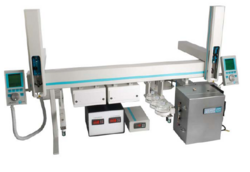Hydrogen Deuterium Exchange
From LEAP
m |
|||
| Line 8: | Line 8: | ||
=== Overview === | === Overview === | ||
| + | H/D-X PAL™ is an easy-to-use, system that provides an automated process for the scheduling and experimental execution of H/D-X experimental workflow. By use of the advanced LEAP Shell scheduling software experimental design is simplified and reliable. Synchronous reagent addition and sample labeling steps are automatically scheduled to increase throughput and produce high quality data. | ||
| + | |||
| + | === The application === | ||
| + | Information on protein structure can be determined by one of 3 commonly used techniques: | ||
| + | <nowiki> Crystalography </nowiki> | ||
| + | <nowiki> NMR </nowiki> | ||
| + | <nowiki> HD Exchange</nowiki> | ||
| + | |||
| + | |||
| + | Hydrogen Deuterium exchange is an experimental technique to obtain structural data on proteins. The technique relies on the accurate measurement of the degree of labeling of a protein by deuterated hydrogen during a precisely measured labeling interval. The labeling reaction is stopped by addition of a quenching reagent. | ||
Revision as of 16:45, 3 February 2009

| Hydrogen Deuterium Exchange |
| Application Type | |
| Sample Prep and Inject | |
| Application ID | |
| HD-x PAL | |
| Description | |
| Scheduling and Sample Prep for HD-x |
Overview
H/D-X PAL™ is an easy-to-use, system that provides an automated process for the scheduling and experimental execution of H/D-X experimental workflow. By use of the advanced LEAP Shell scheduling software experimental design is simplified and reliable. Synchronous reagent addition and sample labeling steps are automatically scheduled to increase throughput and produce high quality data.
The application
Information on protein structure can be determined by one of 3 commonly used techniques: Crystalography NMR HD Exchange
Hydrogen Deuterium exchange is an experimental technique to obtain structural data on proteins. The technique relies on the accurate measurement of the degree of labeling of a protein by deuterated hydrogen during a precisely measured labeling interval. The labeling reaction is stopped by addition of a quenching reagent.
